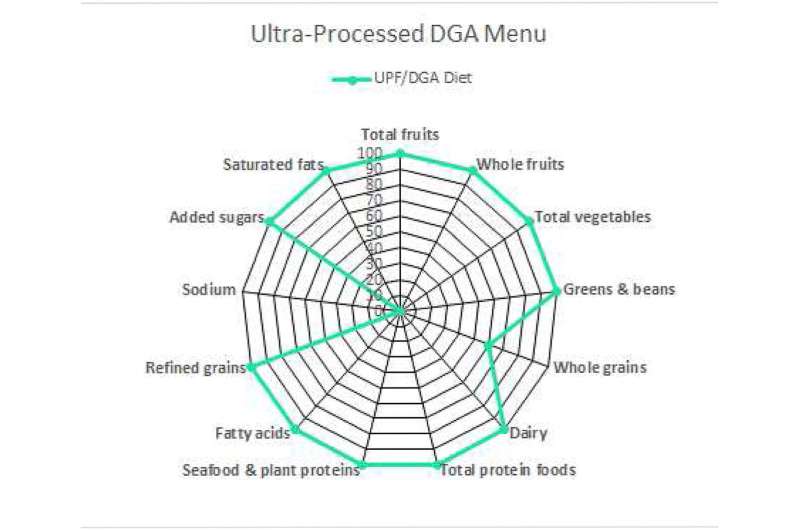This article has been reviewed according to Science X's editorial process and policies. Editors have highlighted the following attributes while ensuring the content's credibility:
fact-checked
peer-reviewed publication
trusted source
proofread
Scientists build a healthy dietary pattern using ultra-processed foods

Scientists at the USDA Agricultural Research Service's (ARS) Grand Forks Human Nutrition Research Center led a study that demonstrates it is possible to build a healthy diet with 91% of the calories coming from ultra-processed foods (as classified using the NOVA scale) while still following the recommendations from the 2020–2025 Dietary Guidelines for Americans (DGA). The study highlights the versatility of using DGA recommendations in constructing healthy menus.
"The study is a proof-of-concept that shows a more balanced view of healthy eating patterns, where using ultra-processed foods can be an option," said ARS Research Nutritionist Julie Hess at the Grand Forks Human Nutrition Research Center. "According to current dietary recommendations, the nutrient content of a food and its place in a food group are more important than the extent to which a food was processed."
In the study, scientists used the NOVA scale to determine which foods to classify as ultra-processed. The NOVA scale first appeared in literature in 2009 and is the most commonly used scale in nutrition science to classify foods by degree of processing. Details of the study were published in The Journal of Nutrition.
According to the NOVA scale, foods can be classified into four groups depending on their degree of processing: (1) Unprocessed or minimally processed foods; (2) Processed culinary ingredients; (2) Processed foods; and (4) Ultra-processed foods.
To test if ultra-processed foods can be used to build a healthy diet, ARS scientists and collaborators created a menu with breakfast, lunch, dinner, and snacks using MyPyramid as a guide for a seven-day, 2,000-calorie food pattern. The menu consisted of foods categorized as ultra-processed by at least two NOVA graders. The foods included in the menu also aligned with 2020 DGA recommendations for servings of groups and subgroups of fruits, vegetables, grains, protein foods, and dairy.
Scientists selected food products that have lower levels of saturated fats and added sugars while still containing enough micronutrients and macronutrients. Some of the ultra-processed foods used in this menu included canned beans, instant oatmeal, ultra-filtered milk, whole wheat bread, and dried fruit.
"We used the Healthy Eating Index to assess the quality of the diet as it aligns with key DGA recommendations," said Hess. "The menu we developed scored 86 of 100 points on the Healthy Eating Index–2015, meeting most of the thresholds, except for sodium content [exceeded recommendations] and whole grains [below recommendations]."
Scientists will continue researching this concept, understanding that observational research indicates that ultra-processed products could be associated with adverse health outcomes. This research shows that there is a role for a variety of foods when building a healthy diet and that more research is needed in this field, especially intervention studies.
More information: Julie M. Hess et al, Dietary Guidelines Meet NOVA: Developing a Menu for A Healthy Dietary Pattern Using Ultra-Processed Foods, The Journal of Nutrition (2023). DOI: 10.1016/j.tjnut.2023.06.028




















